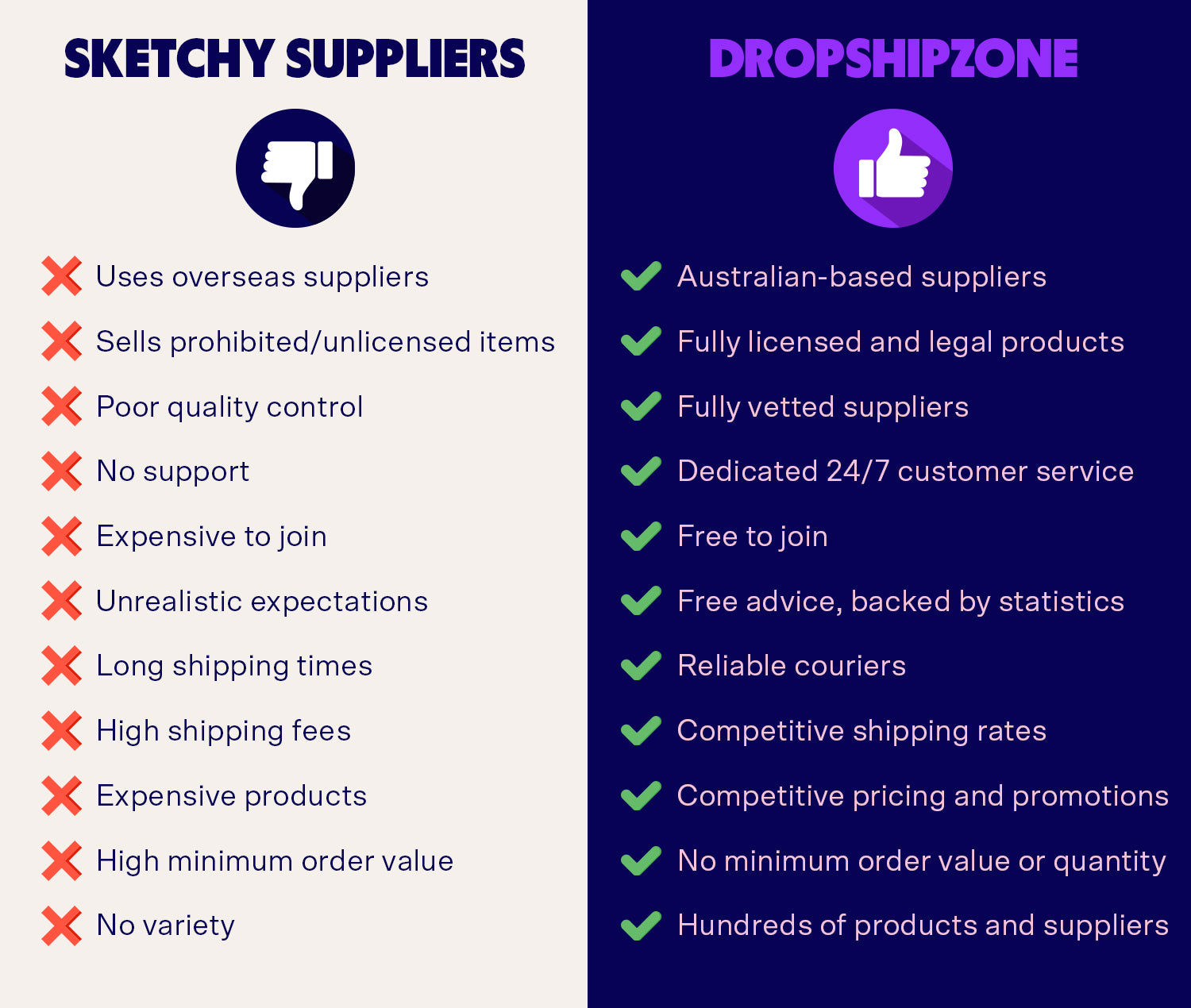
How to Approach Dropshipping Suppliers
There’s no dropshipping business without suppliers. Choosing the right supplier is a crucial part of the dropshipping journey, so it's important to make a good first impression. It can be intimidating to approach suppliers for the first time, especially for entrepreneurs who have just begun their own online business. In this blog, we'll discuss how to approach suppliers for dropshipping products for your online business and turn them from potential business partners into valued team members.
After a simpler approach? See how Dropshipzone connects suppliers and retailers within minutes of joining the dropshipping platform. If you still want to explore the traditional approach, read on.
Determine the Type of Supplier You Want to Approach
Before looking for or approaching dropshipping suppliers, online retailers need to determine what to sell. There are many factors to consider when choosing a product for dropshipping. Businesses should conduct market research to determine what’s trending, identify gaps in the market, and keep track of their competitors. For a few tips on finding popular products, visit our blog "Our Top Tips to Find Trending Dropshipping Products". After selecting products for your dropshipping store, it’s time to search for the right supplier.
There are three main types of dropshipping suppliers to choose from.
Manufacturers/Suppliers
Suppliers are actively involved in the production process at the beginning of the supply chain. Some manufacturers work with suppliers and distributors so they can focus solely on the production process, while others will work directly with retailers. Working with suppliers who closely work with manufacturers can benefit retailers because such suppliers have extensive product knowledge. In some cases, retailers may also be able to directly contact suppliers when there are product deficits, recalls or damages.
Wholesale suppliers
Wholesale suppliers/wholesalers are not directly involved in the production process. Instead, they buy in bulk from suppliers and then sell the products at reduced prices to retailers. Wholesalers can provide discount pricing, a wider variety of products, and a more consistent product supply. Before choosing a wholesale supplier, ensure they have the infrastructure to support dropshipping.
Print-on-Demand suppliers
Print-on-demand suppliers provide dropshipping services. A retailer will provide print-on-demand suppliers with text or an image to print on products they will sell in their store. The supplier handles everything after sales, from printing to order fulfilment and shipping. These products may include t-shirts, mugs, phone cases, prints or other products. With standard dropshipping, the supplier doesn’t make changes to the product, but the print-on-demand business allows for customisation and flexibility. This may lead to longer shipping times but offer more flexibility in terms of product design.
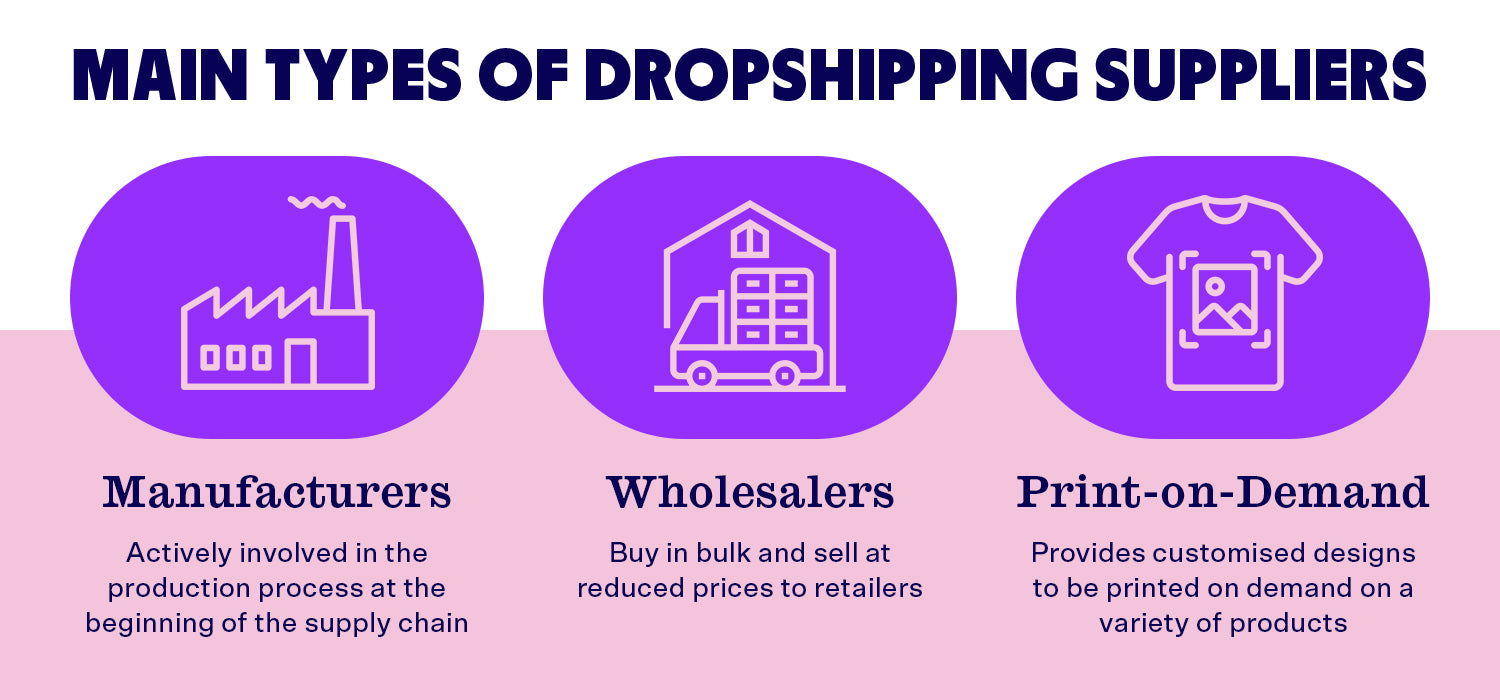
Domestic or International?
In the past, if you wanted to dropship online you could only choose between US suppliers who had inflated prices but high product quality and Chinese suppliers who were affordable but had long shipping times. These days, potential dropshipping suppliers are everywhere, including in Australia, and most suppliers now ship products internationally. With so much choice, how much does using a local or international dropship supplier matter?
There are several advantages to using local suppliers. Prior to working with the supplier, retailers can visit the manufacturing facility and oversee the production process. Local suppliers are easier to contact, both in terms of distance and shared languages. They have a faster turnaround when it comes to shipping and handling. You're more likely to get high-quality products. Customers also love supporting local businesses. However, using only local suppliers will limit what products are available, and these suppliers can be more expensive than sourcing from a low-cost country.
International dropshipping suppliers can give businesses an edge over competitors, as they have access to products that are hard to source locally. In exchange, retailers give international suppliers access to new markets overseas. International dropshipping suppliers also offer products at lower prices than local suppliers, leading to a greater return on investment. However, there is less quality control unless businesses are willing to regularly travel to their chosen supplier location. Language barriers and time zone differences can cause communication delays or other issues. International suppliers also suffer from long shipping times, which may frustrate customers. You’ll also need to consider your tax obligations, as you may be subject to import taxes. This will require you to construct an Import/Export Agreement to determine liability.
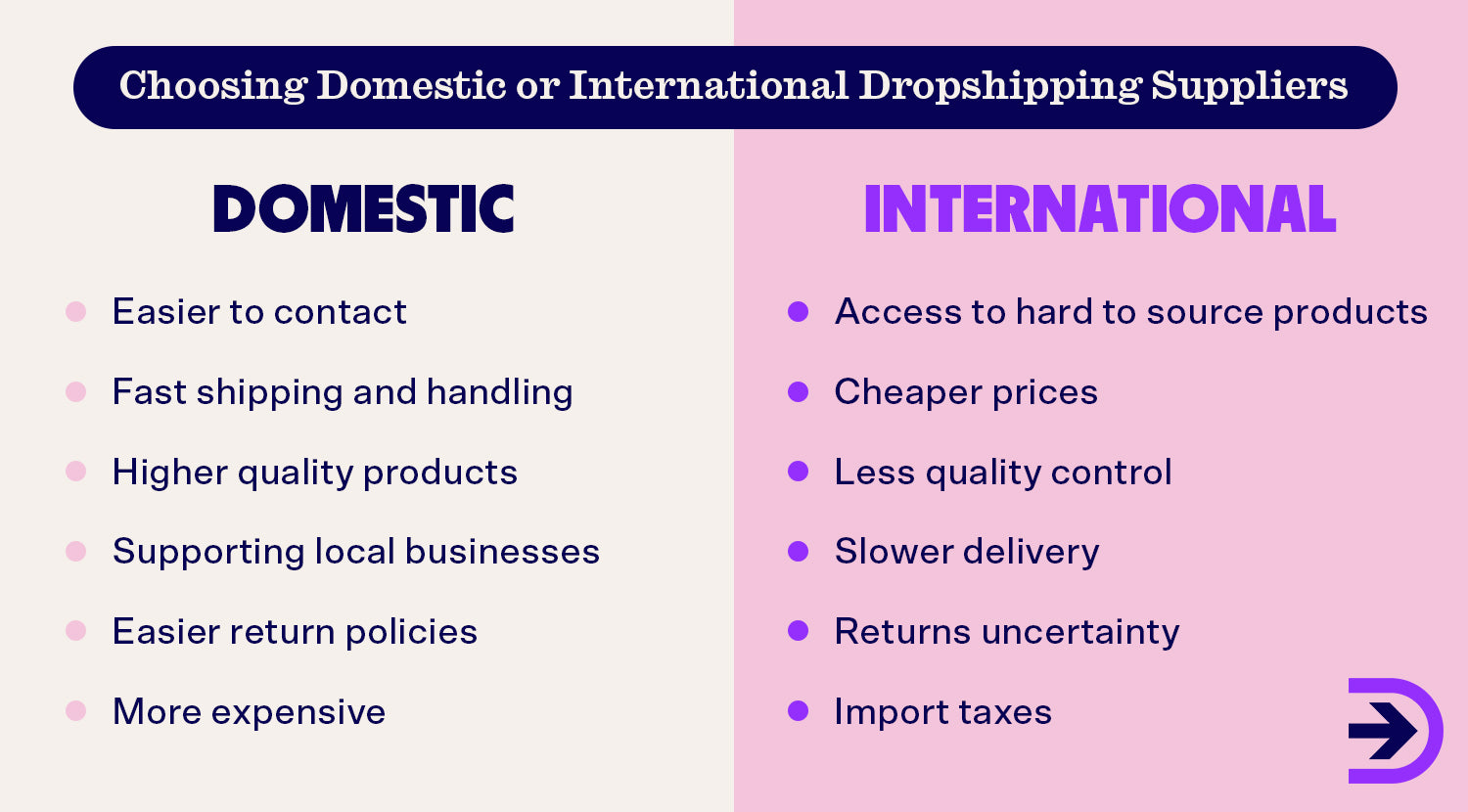
Companies may choose to work with multiple suppliers in a variety of countries. This works well for businesses that operate in a specialised niche, and can also provide a backup in case products go out of stock or are recalled.
Where to Find Legitimate Dropshipping Suppliers
The easiest place to start looking for legitimate dropshipping suppliers is Google. A simple Google search will produce a list of potential best dropshipping suppliers in any niche. From there, you can start researching your top choices. You’ll want to thoroughly research the business, whether they have good reviews and sell quality products. You can find this information through Google reviews, looking for their name on ecommerce forums, and asking other businesses if they have heard of or done business with them. Read their FAQs and policies to uncover any potential red flags or barriers, such as a poor returns policy or high upfront costs.
Another reliable way to find legitimate suppliers is to join a supplier directory. These are created with the sole purpose of connecting retailers to legitimate, vetted suppliers. It contains information about suppliers including their locations, product range and pricing. You may need to pay an access fee, but a directory can help narrow the search. Popular directories include Austrade, Australian Dropshippers Directory, Alibaba, SaleHoo and Worldwide Brands.
Some suppliers can be found by attending trade shows, conferences and exhibitions. These events are gatherings of industry experts, manufacturers, wholesalers, retailers and suppliers that offer opportunities to display, discuss and promote the latest in technology, products and services. They are a great opportunity for retailers to network with suppliers, find leads, and build valuable business relationships. For a list of Australia’s leading ecommerce conferences, check out our list of must-attend ecommerce conferences in 2023.
Another way to find legitimate dropshipping suppliers is by joining online communities related to the dropshipping process and/or specific product niches. Here, you can connect with other sellers and potential suppliers who can provide advice that may help grow your business. There may also be opportunities for promotion, whether you regularly contribute to forums and discussions or directly advertise on the platform. Reddit is a good place to find forums or find groups on Facebook, Shopify Community, Dropship Forum and Quora.
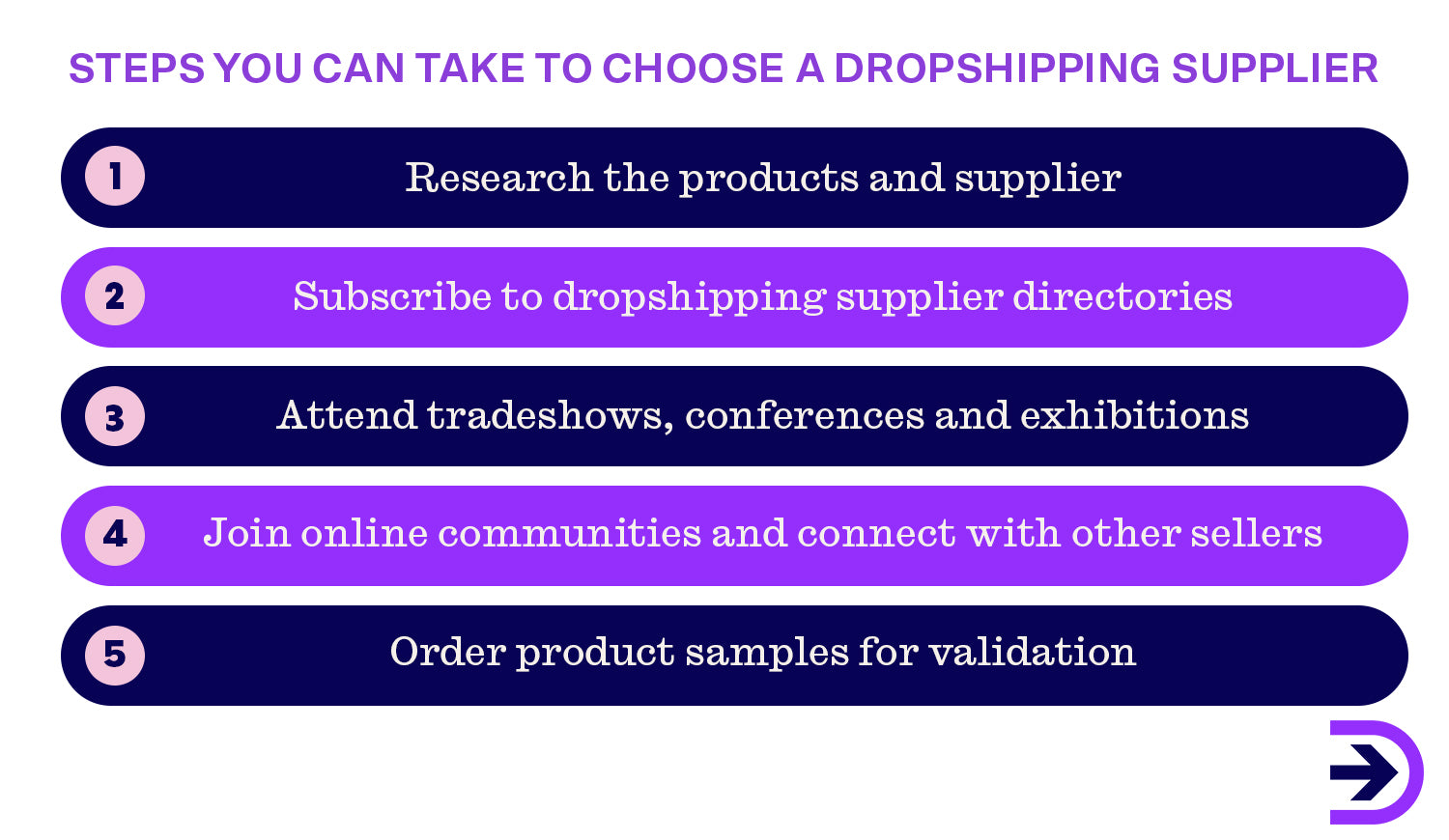
You can also find suppliers by examining competitors' ecommerce stores. By ordering products from competitors, you can determine a lot about potential suppliers, from the products they offer to their shipping costs and times. After receiving the product, you can track down the supplier via the return address. While this method has limitations, it can give you valuable insight into popular suppliers and the process of dropshipping.
Not all suppliers are created equal. A dropshipping supplier may be illegitimate if they meet any of the following criteria:
-
They sell wholesale to the general public, not just B2B.
-
They are hard to contact.
-
They ask for recurring or hidden fees.
-
They don’t have their own website.
-
They sell counterfeit products.
-
They only accept payment via wire transfer.
-
They have low-quality product images.
Things Suppliers Are Looking for In a Dropshipping Retailer
When selling to wholesalers, suppliers have much higher average order values. With dropshipping, suppliers are fulfilling smaller orders and need to move more products to break even. Suppliers also have to pay for inventory storage and other overhead costs. Suppliers must be careful which businesses they partner with as they need a high sales volume to cover these costs. There are several key areas that suppliers will consider when evaluating potential retailers.
Time Commitment
Suppliers want to know that their business partners have the time and dedication to market and sell their products. It’s estimated that up to 90 per cent of dropshippers fail in their first month, which is a huge risk for suppliers. While many dropshippers fail due to a lack of market research, lack of investment or poor customer service, a large number of beginner retailers fail from a lack of patience. There are many dropshipping “gurus” that promise thousands of dollars in profit within months of starting a dropshipping ecommerce business with minimal effort - as long as you follow their expensive course material. In truth, most dropshippers just starting out will work anywhere between 30-90 hours a week for the first six months to a year. Only once the business is established, the retailers can reduce their hours, with some working as few as five hours a week. Much of this time is spent creating content for social media, researching the latest trends, creating and executing marketing campaigns, maintaining websites, and communicating with both customers and suppliers. For more information on average working hours for dropshippers, check out our blog “How Many Hours Do Dropshippers Work?”.
You can show suppliers you’re in it for the long haul by having open dialogues regarding company goals and long-term commitment. Ideally, you and your suppliers will be able to develop joint objectives and develop long-term value-sharing mechanisms that will benefit both businesses over time. You might also offer a long-term contract right away - a commitment to sell a certain amount of product or for a certain amount of time in exchange for a discounted rate.
Experience and Credentials
Each supplier has their own requirements for working with retailers. Before you contact suppliers, make sure that you meet all of your legal obligations as a retailer in Australia. Most dropshipping suppliers will not work with individuals without an ABN or a registered business name. While dropshipping doesn’t require a degree, you should have a basic understanding of dropshipping, the product industry, your target market, and prospective suppliers.
You will also want to have a website. 86 per cent of B2B companies use their website as a customer or prospect communication channel, and 94 per cent of first impressions relate to a website’s design. A well-designed website will show prospective suppliers that you have technical knowledge and give them insight into how their products will be sold. You’ll also have the opportunity to use a domain name email address, which looks more professional than a free service such as Outlook or Gmail. You don’t need to have products to make a website, simply use stock images as placeholders to give suppliers an idea of what their products could look like on your website. However, don’t show them an incomplete website - your site should be functional and ready to go live as soon as you have product information, shipping information, and images from your supplier.
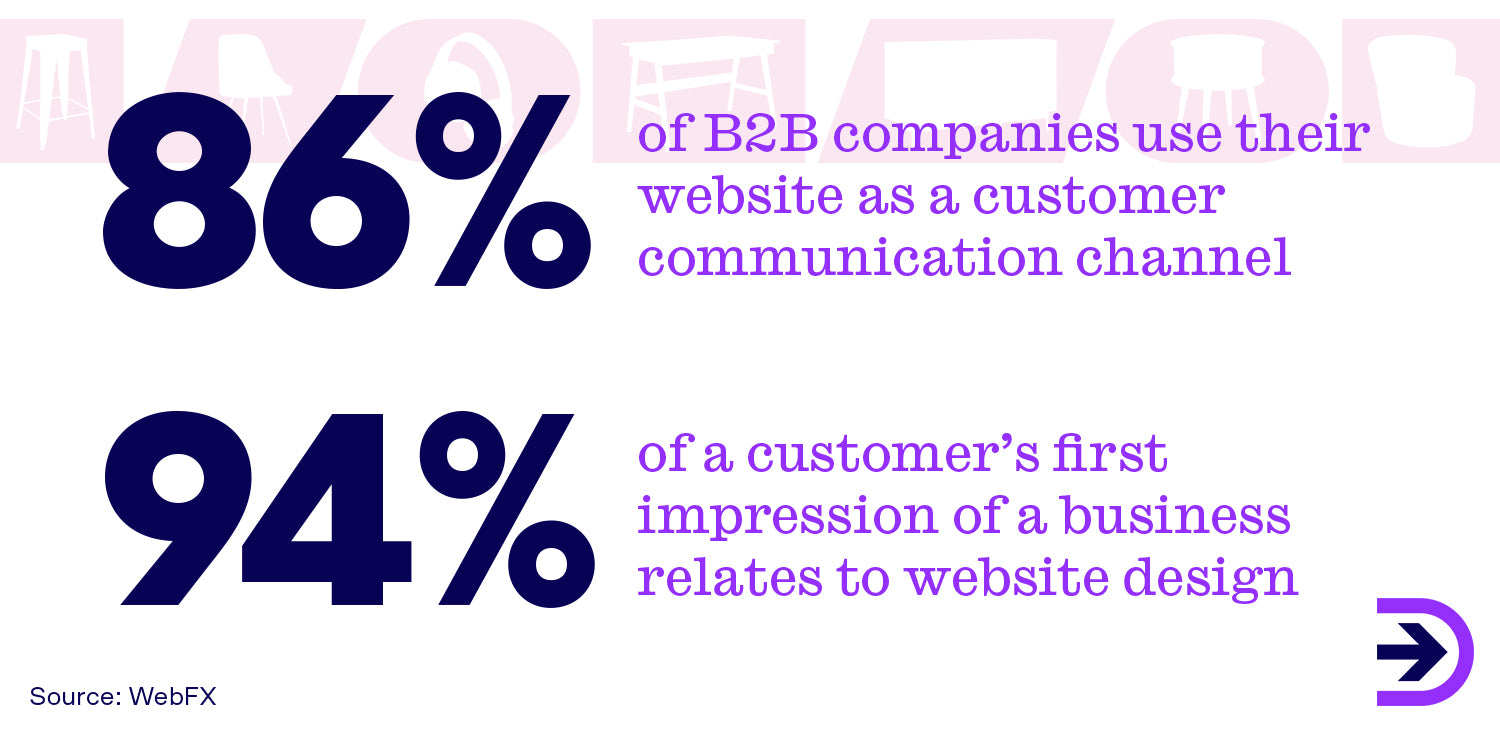
Consistent Sales
Suppliers need to be convinced that you have purchasing power and the ability to sell products. If this is your first supplier, this can be difficult to prove. However, you can bring new value to a supplier in another way. Pitch new markets to your supplier with a solid marketing plan. Show them the value of working with you as a dropshipping supplier. Define your unique selling point: what specific benefit do you offer that competitors cannot? If you can convince suppliers, you can certainly convince customers.
Another benefit of having a professional-looking website is that you can show potential suppliers analytical data such as bounce rates, conversion rates and task completion time (if you are already live and selling products), and usability metrics such as site speed and loading times. This will demonstrate to suppliers that your website is attractive to customers and will generate sales.
Important Questions to Ask Potential Dropship Suppliers
When reaching out to dropshipping suppliers, it is important to come prepared with relevant questions about the business and its products, policies, and expectations. This is an opportunity to show you are a professional and serious online retailer that knows the industry. There are some basic questions that you’ll want to ask upfront.
-
How much are your products?
-
Do you have a minimum order quantity?
-
What are your payment terms? Are they negotiable?
-
How long does it take for the orders to be processed or shipped?
-
What are your shipping rates?
-
What are your returns and refunds policies?
-
What are your stock levels? Can I get an inventory feed?
Once you’ve gathered basic information about the company, you may want to follow up with more detail. These questions can help you form the base of your Service Level Agreements (SLAs) which are minimum requirements for services between you and your supplier. Questions may include:
-
Who are your courier partners?
-
Are you the manufacturer of your products?
-
Can you provide me with product samples?
-
How large is your facility/can I tour your facility?
-
Do you offer customised packaging services or private labelling?
-
How will you invoice me for orders?
-
Are there other costs besides the cost of the product, such as shipping fees, monthly membership fees, duty fees, or product returns fees?
-
Do you have a robust order-tracking system in place?
-
Can I use your product descriptions/photos on my online store?
-
What is your gross profit margin?
-
How often do product prices change?
-
Do your products come with a warranty or guarantee?
-
Do you provide any integration possibilities to run a dropshipping store effectively?
-
How do you handle import/export taxes? Do you have an Import/Export Agreement?
You should also be prepared to state your business needs and answer clarifying questions from your potential supplier. These questions may include:
-
How long have you been in business?
-
What is your experience with dropshipping?
-
How do you plan on marketing our products?
-
Can you offer pre-payment, a deposit or a minimum order spend?
-
What do you offer that other retailers do not?
-
Have you worked with other suppliers before? What was your experience?
How to Approach Suppliers about Dropshipping
Making a good first impression when contacting suppliers is crucial for success. On average, first impressions are made within 27 seconds of the meeting, though it can take as little as 10 seconds. These 10 seconds will highly influence whether your chosen supplier will be interested in doing business with you.
Step 1: Check their website
Your supplier’s website should have a page with their contact information or a contact form. Follow any outreach instructions. If there is a contact form, fill it out and also follow up via email and/or phone. Show them you are eager to start a professional business relationship and excited to work together to build your businesses.
Step 2: Contact the key decision-makers
When you email the supplier, use the email provided on their website. If you call the supplier, ask to speak directly to their supply or distribution department. You want to make contact with the key decision-makers and determine whether they are open to dropshipping and if they have a dedicated supply program already in place. Where possible, address the supplier by name - it adds a personal touch and helps you to stand out as opposed to a generic greeting. If you don’t know the name of the supplier, you may be able to find it by searching social media such as LinkedIn, finding trade publications, or reaching out to the supplier or members of their management team directly.
Step 3: Introduce yourself
Introduce yourself and your business, and express your interest in forming a partnership. Ask for basic information including product prices, shipping rates, return policies and payment terms. Offer something that will pique your supplier’s interest such as estimated monthly order potential, a guaranteed trial period, or a deposit on the first order. These tangible benefits will help the supplier visualise what a partnership with your business could look like.
Step 4: Wait for their response.
Depending on the supplier’s response, you can start asking more detailed questions and start negotiating terms of service. If the supplier does not reach out immediately, send follow-up emails within 2-7 days. If the supplier rejects your offer, politely thank them for their time and move on to your next prospect.
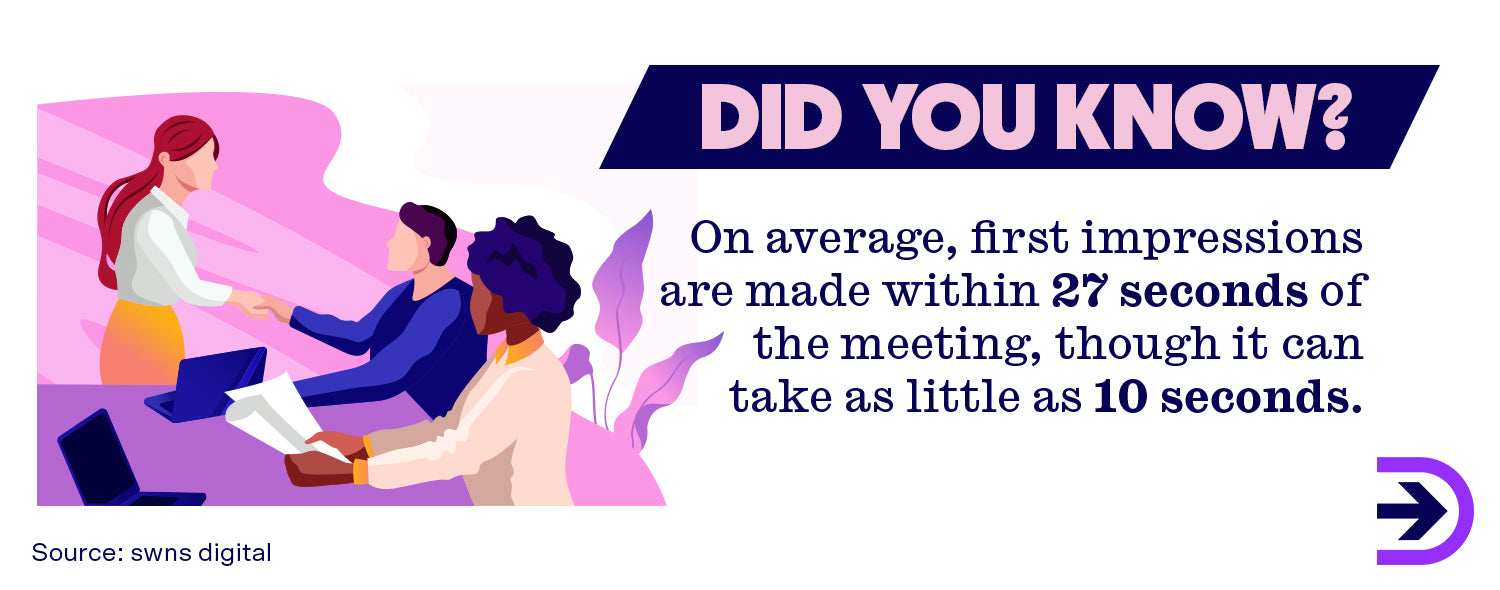
Here are some other tips to keep in mind when contacting a new supplier.
Be Professional
No matter whether you’re sending an email, talking on the phone or meeting in person, you should act professionally. This means using appropriate language, proofreading any text correspondence, being polite, and being on time for scheduled meetings. Treat potential suppliers with respect even if you are feeling frustrated at a lack of response or clarity. Avoid asking questions that are too personal, like you might ask a friend. Remember, this is a business relationship - while you may develop a more casual, friendly rapport over time, introductory meetings are for setting the tone for a legal partnership.
Know Your Audience
This is where precise knowledge of your potential supplier will help. Before your first meeting, aim to know more about the supplier than they know about you. Suppliers cater to a wide range of demographics, and knowing the right tone to use with them will go a long way to making a good first impression, as well as informing you if they are a good fit for your brand. Suppliers may conduct business in a formal tone, or they may be more conversational, and you’ll need to decide if their way of doing business fits your ideal partnership. You’ll also need to account for cultural differences if you are contacting overseas suppliers. If there is a language barrier, you should avoid using technical jargon or slang. Hire a translator or use reliable translation software for more complex interactions. Better still, learn some basic phrases from their country - even if you can’t speak the language fluently, it will show you want to make an effort.
Be Brief
Your first contact should be brief, but specific. You don’t want to overwhelm suppliers with questions right away, as you may come across as insecure, unconfident, or amateurish. Determine which questions are the most important to ask first for your business. Ask for simple details in your first correspondence and save the more detailed questions for follow-up correspondence. If your introductory email is too long, the supplier may not read it at all.
Don’t forget, suppliers want to partner with your business as much as you want them. You can always negotiate terms that don’t suit you.
How Dropshipzone Connects Suppliers and Retailers
The outreach process can be long, difficult and intimidating for new business owners. That’s why Dropshipzone has simplified the process. Using our Dropshipzone platform, you can add products to your store right away from hundreds of reliable suppliers around Australia. Rather than wasting time and resources on scammy suppliers or expensive directories, you can relax knowing our suppliers are vetted by experts in the industry and come with thousands of quality products for you to sell online. Our catalogue is growing every day with products across every category. Not only do we have everything you need to start your own online dropshipping business, but we provide excellent tailored customer support, competitive shipping rates and regular promotions across our brands. There’s never been a better time to start - sign up today for free and find dropshipping suppliers for your new ecommerce store.
